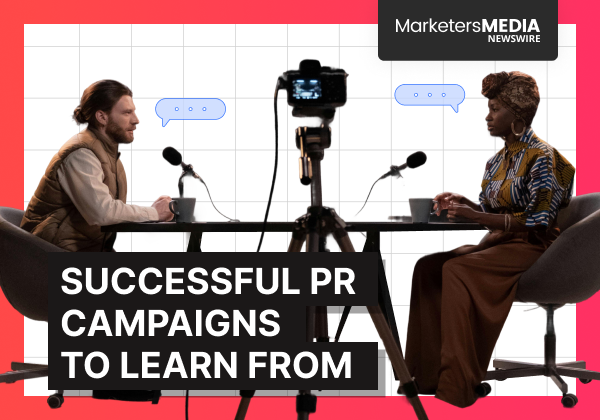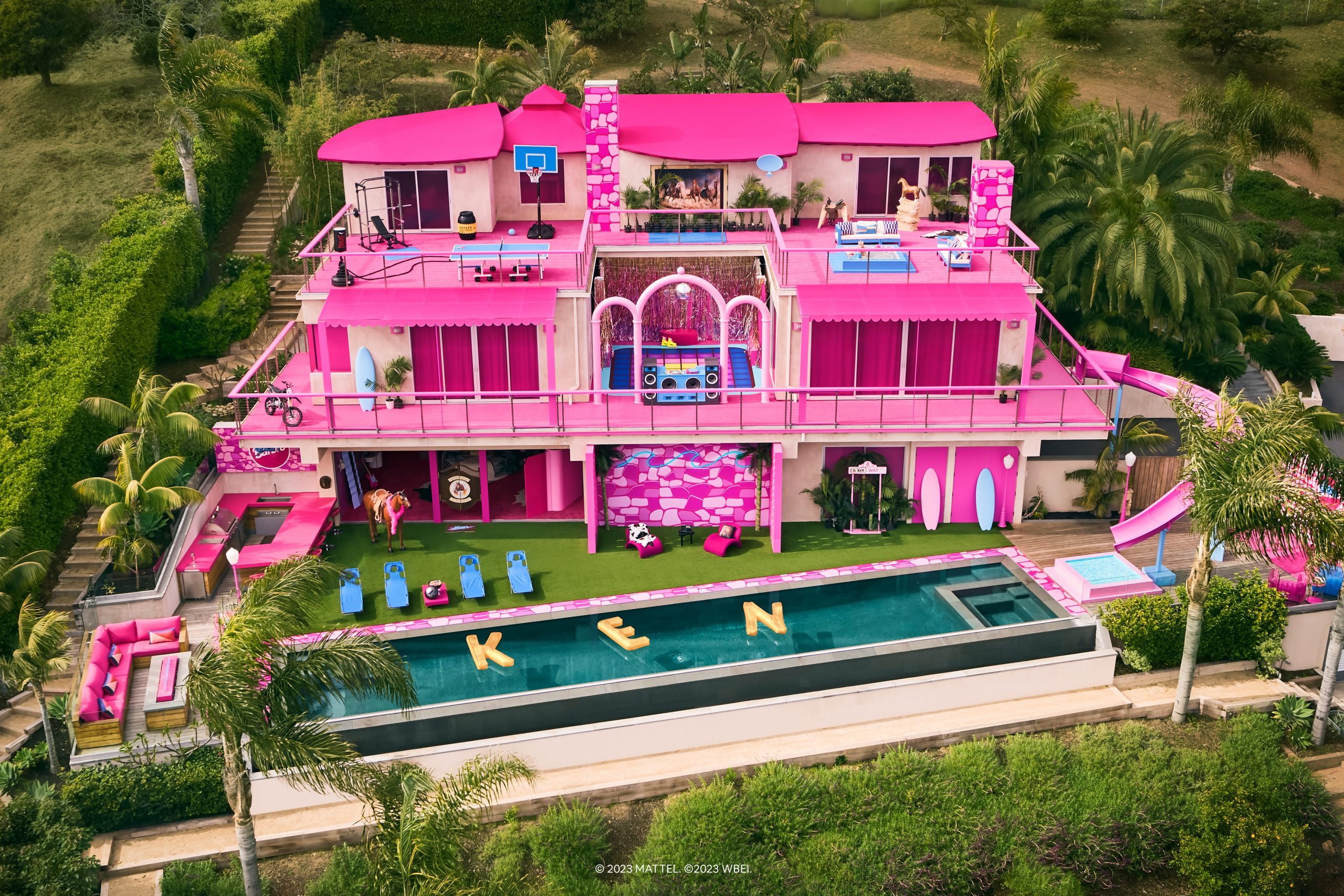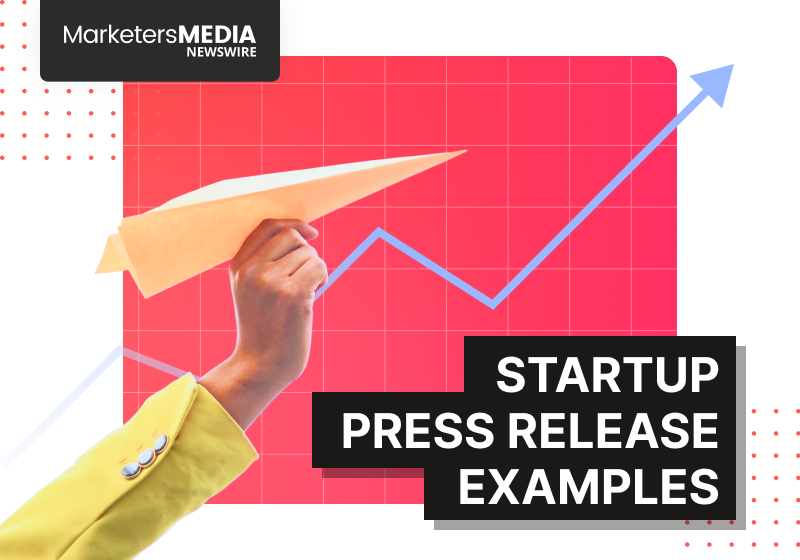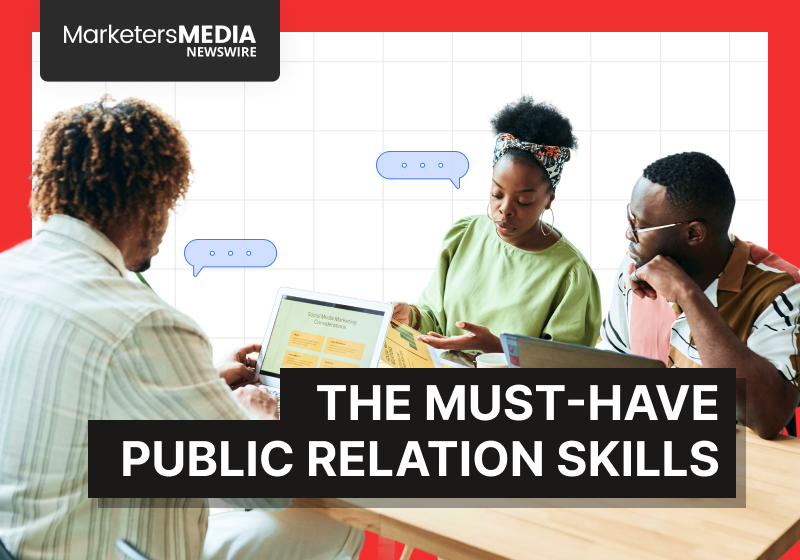Who says PR is just for putting out fires? You don’t need a crisis to make it worth your time.
Smart businesses use public relations to build trust, shape perception, and stay top-of-mind—before problems ever start.
The best PR campaigns hit two targets: they connect emotionally and drive real business results.
In this article, you’ll see what sets standout campaigns apart from forgettable ones—with real examples that generated millions in earned media.
What Is Public Relations (PR)
Public relations is the strategic practice of building and maintaining relationships between an organization and its key audiences. At its core, PR manages how people perceive your brand through earned media—coverage you don't pay for directly.
Unlike advertising, which buys attention, PR earns it. A journalist’s article or an influencer’s post holds more weight than anything you say in your own ads.
PR also plays the long game. Marketing pushes products now, PR builds credibility that pays off later—with partnerships, press coverage, and public trust.
It’s not limited to one lane either. PR covers media outreach, crisis handling, thought leadership, internal comms, and community engagement. And today, it works hand-in-hand with your digital content, SEO, and social media.
Why PR Matters to Businesses
Trust is the foundation. When your story comes from a journalist, an influencer, or a respected voice (not your own ad), it instantly feels more credible. That’s the power of third-party validation.
PR also shapes how people see you. Through consistent messaging and smart positioning, it helps define your voice, values, and public image.
Awareness and visibility grow through strategic media placements and thought leadership initiatives. These give brands the kind of exposure that paid ads can’t always buy.
Public perception directly influences buying behavior too. Studies consistently show that consumers research brands before making purchases, and positive media coverage significantly impacts their decisions.
When things go wrong, PR is your safety net. Brands with solid PR plans can respond fast, stay in control, and avoid long-term fallout.
And compared to traditional advertising? PR is often a smarter spend. You’re not paying for space—you’re earning it, and that makes every placement go further.
Core Areas of PR
PR isn’t just press releases and interviews. It covers a range of roles that manage how people see your brand.
Media Relations builds relationships with journalists, editors, and influencers who can amplify your story. This means crafting newsworthy angles, responding to reporter inquiries, and positioning your experts as go-to sources.
Crisis Management prepares you for when things go sideways. It's about having response plans ready, controlling the narrative quickly, and protecting your reputation when negative situations arise.
Thought Leadership positions your team as experts. Speaking gigs, industry commentary, and strategic content help you lead the conversation.
Internal Communications keeps your own team aligned and engaged. This includes company updates, change management, and making sure employees can confidently represent your brand.
Community Relations builds goodwill where you operate. Whether it's local sponsorships, charitable partnerships, or addressing community concerns, it strengthens your local reputation.
Investor Relations manages communication with shareholders and financial analysts. For public companies, this includes earnings calls, annual reports, and maintaining transparency about business performance.
Government Affairs handles regulatory relationships and policy advocacy. When laws or regulations could impact your business, this function manages those critical conversations.
Each area works together to create a comprehensive approach to reputation management—one that builds trust, prevents problems, and positions your brand for long-term success.
What Makes a PR Campaign Successful
Not every PR campaign lands. But the ones that work do more than getting attention, they make people care and deliver results.
Here’s what sets strong campaigns apart:
Clear, measurable objectives provide direction and enable success evaluation. Successful campaigns establish specific, time-bound goals rather than vague aspirational statements.
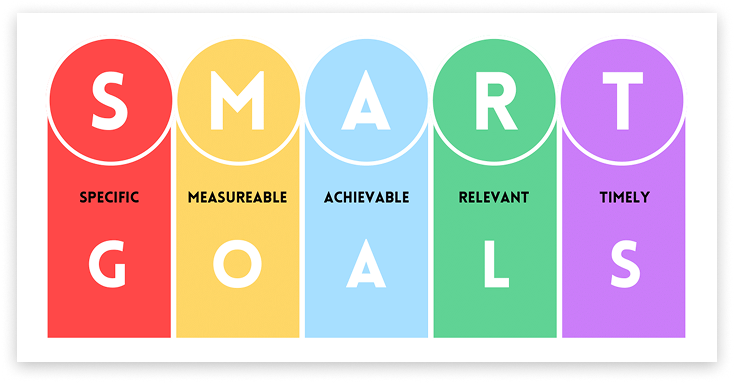
Well-defined audience targeting ensures messages reach the right people through appropriate channels. Understanding audience preferences, media consumption habits, and communication styles improves campaign effectiveness.
Strategic and timely messaging aligns with current events, industry trends, or seasonal opportunities. The best PR campaigns feel relevant and timely rather than forced or disconnected.
Creativity, emotional resonance, and storytelling separate memorable campaigns from forgettable ones. Human interest stories, unexpected angles, and emotional connections drive engagement and sharing.
Data-driven approaches use analytics to guide strategy, measure performance, and optimize tactics. Modern PR teams rely on metrics to demonstrate value and improve results.
Flexibility to adapt in real-time allows campaigns to respond to changing circumstances, audience feedback, or unexpected opportunities. Rigid campaigns often miss important moments or fail to address emerging issues.
When a PR campaign checks all the right boxes, it delivers impact you can see—and stories worth sharing.
Let’s look at a few that did exactly that.
Examples of Successful PR Campaigns
1. LEGO – #BuildToGive
Since 2017, LEGO has turned holiday creativity into something more meaningful.
Each year, families are invited to build themed creations—like hearts in 2023—and post them on social media using #BuildToGive. For every creation shared, LEGO donates a set to a child in need.
This is a strong example of user-driven community relations. Instead of leading with a product push, LEGO puts participation first. It taps into family bonding, social sharing, and purpose — all wrapped into a simple action: build, share, give.
The numbers speak for themselves:
- Over 6.5 million LEGO sets have been donated since launch.
- In 2023, the goal was to reach 1.5 million children through the campaign.
There’s a clear objective, a consistent annual rollout, and wide media pickup—without leaning on traditional advertising.
It also builds goodwill with parents while reinforcing LEGO’s message: play matters, and it can do good.
2. Carlsberg – Adopt a Keg
When Malaysia’s lockdowns shuttered bars and restaurants during the Movement Control Order, Carlsberg came up with a creative way to help them survive—and give customers something to look forward to.
Through its “Adopt a Keg” campaign, Carlsberg rewarded home drinkers with free draught beer they could redeem once outlets reopened.
All they had to do was scan barcodes or receipts from Carlsberg purchases at home to fill up a virtual keg. Once the keg was “full,” they’d get vouchers for beers on tap at participating bars.
It was a timely response to a real problem. Bars were bleeding cash with no customers, and customers were stuck at home. Carlsberg positioned itself in the middle — supporting both sides without pushing product too hard.
There were clear benefits across the board:
- Consumers felt good about helping their favorite spots reopen.
- Bars got paid for each beer redeemed, offering immediate financial relief.
- Carlsberg kept its brand front-of-mind during months when people weren’t going out.
This built goodwill with business owners and drinkers alike, kept sales moving through retail channels, and generated earned coverage for showing solidarity with the hospitality industry.
It’s a case of smart timing, mutual benefit, and knowing how to turn a promotion into something bigger than a sales push.
3. Zoom – Pandemic Response
When the world locked down in 2020, Zoom suddenly went from a workplace tool to a daily essential for schools, families, and friends. Virtually overnight, a B2B video conferencing app became a household name.
But that kind of rapid growth comes with scrutiny. Zoom’s daily meeting participants jumped from 10 million to over 300 million in four months. With it came security issues, headline-grabbing incidents like “Zoombombing,” and questions about data protection.
Here’s where their PR strategy kicked in.
CEO Eric Yuan stepped up as the face of the brand—taking interviews, publishing updates, and speaking openly about the company’s growing pains. Instead of hiding behind press releases, Zoom’s leadership leaned into transparency.
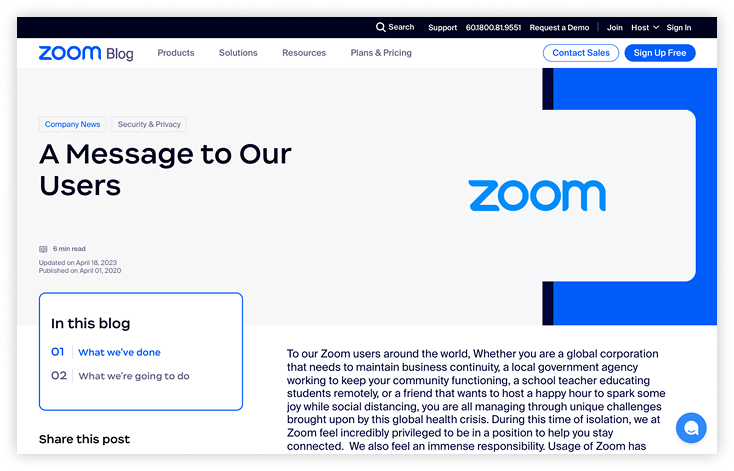
They paused feature development for 90 days to focus on security, rolled out product updates fast, and held weekly briefings to explain the changes.
They also highlighted positive use cases—classrooms, weddings, remote therapy—to show how the platform was keeping people connected during isolation.
Despite the challenges, Zoom turned potential backlash into renewed trust, and became the default word for video calls worldwide.
4. Bumble – IPO & Brand Storytelling
When Bumble went public in 2021, it marked a major milestone—not only for the business, but for its founder. Whitney Wolfe Herd became the youngest woman in U.S. history to take a company public.
The PR team recognized that this moment had weight beyond market numbers.
They built a story that elevated Wolfe Herd’s leadership, positioning her as a trailblazer in tech and business. Media coverage focused on her vision for safer digital spaces and the company’s women-first approach to dating.
One photo stood out: Wolfe Herd ringing the Nasdaq bell while holding her baby. That image went viral because it spoke volumes—about balance, visibility, and what’s possible in leadership.
This is what leadership looks like. #BumbleIPO
— Bumble (@bumble) February 11, 2021
@WhitWolfeHerd 💛 pic.twitter.com/v8csvdCAiE
Bumble’s communications didn’t shift the spotlight; they used it intentionally. By framing the IPO around values like respect, empowerment, and inclusion, they connected the brand’s mission with real-world action.
The strategy resonated. The IPO raised $2.15 billion, and Bumble walked away with strong brand momentum, not just capital. It showed how a thoughtful narrative—grounded in identity and leadership—can shape public perception and investor confidence at the same time.
5. KFC – FCK Apology
In 2018, KFC ran out of chicken in the UK. Hundreds of stores had to close. Customers were angry. It could’ve been a disaster.
Instead, KFC responded with one full-page ad—A KFC bucket appeared with the letters rearranged to read “FCK,” paired with a short, conversational apology.

The message struck a nerve—in a good way. It felt real, self-aware, and even funny.
The result:
- 700+ media articles and global TV coverage
- Nearly 800 million people reached
- 219 million social media impressions
- Brand trust bounced back fast, especially with loyal fans
Even internally, the campaign boosted morale. Staff appreciated how the company owned the issue and stayed human.
This was crisis response done right—timely, simple, and striking the right tone. It didn’t deflect blame. It owned the issue and turned it into a moment of brand connection.
6. Popeyes vs. Chick-fil-A – Chicken Sandwich War
In August 2019, Popeyes launched a new chicken sandwich on Twitter.
Chick‑fil‑A responded with a tweet subtly reminding the world that theirs came first—prompting Popeyes to fire back with a now-iconic quote tweet: “… y’all good?”
... y’all good? https://t.co/lPaTFXfnyP
— Popeyes (@Popeyes) August 19, 2019
The exchange sparked a nationwide debate. Social media, especially Black Twitter, lit up with memes, polls, videos, and debates tagged #ChickenWars and #ChickenSandwichWars.
The results were massive:
- Popeyes earned an estimated $23.25 million in free media
- Sold out nationwide in two weeks
- Some locations had lines around the block
Popeyes didn’t need a huge campaign budget. The brand tapped into timing, personality, and platform-native humor. It knew its audience—and let them run with it.
What started as a tweet turned into a sales frenzy, pop culture moment, and a case study in how smart, reactive PR can drive serious business results.
7. Barbie Movie – Pre-Launch Buzz
Before Barbie hit theaters, it was already everywhere.
The team locked in one thing early: Barbie Pink. It showed up on billboards, product packaging, social posts, and brand tie-ins. You saw the color, you thought of the movie.
Then came the collabs—over 100 of them. Burger King Brazil launched a pink burger. Xbox added Barbie cars to its games. These partnerships helped the film reach every kind of audience.
The Selfie Generator was the breakout hit. Fans could create their own Barbie movie posters with a photo and a tagline. TikTok and Instagram blew up with millions of user posts, all doing the marketing for them.
They didn’t stop there. Barbie’s DreamHouse popped up on Airbnb. The soundtrack dropped with top artists like Billie Eilish and Nicki Minaj. Every move added more fuel.
The results:
- Over 18 million Barbie Selfies generated
- $150M+ in estimated earned media
- Global box office sales passed $1 billion
- Record-breaking status as Warner Bros.’ highest-grossing film
This was more than a campaign. It turned Barbie into a global moment.
Building Your PR Success
The campaigns above show what's possible when strategy meets creativity. Each one built genuine connections that translated into measurable business outcomes.
Start with clear objectives tied to business goals. Know your audience and the channels they trust. Develop angles that serve both your interests and theirs.
Remember: PR is a long-term investment in relationships and reputation. Consistency matters more than perfection, and authentic stories resonate more than corporate speak.
Your next campaign could be the one that transforms how people see your brand.
And when you're ready to amplify that story, MarketersMEDIA Newswire is here to help. With guaranteed pickup across 550+ media outlets—including Business Insider, AP News, and Newsbreak—our network spans 160 countries and reaches up to 5.9 billion in potential audience.
Over 600,000 press releases have been published through our platform, giving businesses a reliable way to gain global exposure that gets seen, shared, and remembered.Ready to get started? Contact us to learn more.
Free Press Release Template
Tell us where to send your PDF:
